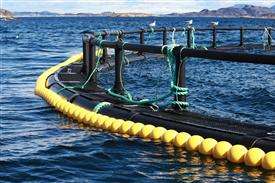Increased use of medicines in Norwegian fish farming

The increase in sales of agents to treat sea lice infestations continued in 2013. However, sales of antibacterials showed a reduction compared to the previous year. Sales of anthelmintics showed a slight increase compared to 2012. These figures come from the Norwegian Institute of Public Health.
Continued problems with resistant lice
Sales of agents against sea lice (in kilograms) have continued to increase since 2012. There was an increased use of all agents against lice except cypermethrin and azamethiphos. The biggest increase was for the chitin synthase inhibitors, diflubenzurone and teflubenzurone. In 2013, sales of agents against sea lice were at levels seen in the early 1990s.
Taking into account the different dosage of the various agents, the figures show that the number of sea lice treatments was approximately at the same level in 2012 and 2013.
The trend in 2013 suggests continued high level of drug resistance in Norwegian salmon. Reduction in azametiphos use may indicate lack of efficacy, as well as use in combination with other agents at lower dosages. Resistance to some agents against sea lice has resulted in increased sales of other agents. Use of sea lice treatment has been high since 2009.
In 2012, the use of hydrogen peroxide was somewhat reduced compared to the previous two years. However, consumption has more than tripled from 2012 to 2013.
Still marginal use of antibacterials
The sale of antibacterials for use in farmed fish in Norway varied in the period 2009-2013 (see table 1), but because sales are very low, small variations in the number of disease outbreaks are reflected in the statistics. In relation to the biomass of farmed fish produced, there are marginal changes in antibacterial sales, which are very low; the amount of antibacterials sold in recent years equates to approximately 0.5 to 1 per cent of the fish being treated with a course of antibiotics.
Anthelmintic sales increasing
Sales of medicines against intestinal worms have shown an annual decline since 2004, but increased for the first time from 2010 to 2011. In 2012, sales tripled compared to 2011. In 2013 we see a slight increase in sales compared with 2012.
Other agents
Consumption of the fungicide bronopol has been relatively stable in the period 2010-2012, but increased by 30 per cent in 2013.
Tables 1-5 show sales of antibacterials, sea lice treatment, anthelmintics, fungicides and anaesthetics used in Norwegian aquaculture in the period 2004-2013. The figures are based on sales from wholesalers and feed mills.


Provided by Norwegian Institute of Public Health














.jpg)





